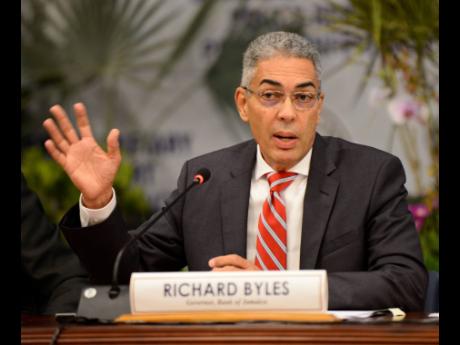Many of the jobs currently being created in the Jamaican economy are comparable to the same low value-added ones produced two decades ago, according to the governor of the Bank of Jamaica, the BOJ.
“Thank goodness for them because they are jobs, and the people getting them didn’t have any before,” said Richard Byles. “But they are the same jobs that we produced 20 years ago, whether it is in the hotel sector (or) the BPO business. It’s the same kind of low value-added.”
Governor Byles, speaking against the background of anaemic economic growth, suggested that the only solution to that is a better educated workforce.
“And that goes back to primary school, secondary school and what you train people for at university level,” he said, while addressing a media luncheon at the central bank’s headquarters on the Kingston waterfront on Wednesday.
“With all due respect to the lawyers who are present,” he added, “I don’t think Jamaica needs …”, but before he could finish his statement others chimed in, “more lawyers”, to which Byles responded with a laugh: “I didn’t finish my statement.”
He continued: “So where we put our resources in training that human capital is important at the university level, and at all other levels, too.”
The Jamaican economy is yet to break through to two per cent annual growth despite several years of reforms, and is currently tracking at 1.3 per cent, based on Statin estimates for the June second quarter.
The market value of Jamaica’s annual economic output is just over $2 trillion, or $773 billion in real terms.
For the first half of 2019, economic output has been estimated at $1.05 trillion, or nearly $393 billion in real terms.
Jamaica is now in its 18th quarter of uninterrupted expansion, which has led to improvements in the job market and a record unemployment rate of 7.8 per cent.
Byles, however, appears to be concerned not about the number but the quality of the jobs that are available, and how to go about developing better-quality workers.
“We do need to give people a real foundation with primary education and invest in our secondary schools so that it’s not five schools, four of which are girls’ schools, that are at the top, but [that] the good schools are all over the island and are in multiples,” said the central bank chief.
“That’s a long-term vision, and that’s what we need now more than ever,” he said. “We need to turn our attention to transformation, some long-term goals, and putting the resources behind those goals.”




Leave A Comment